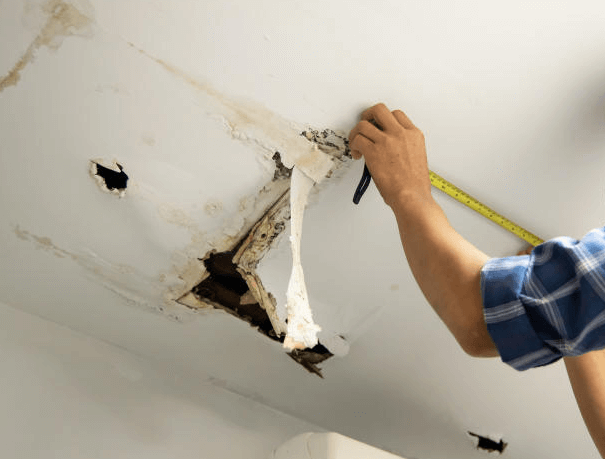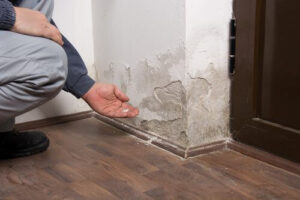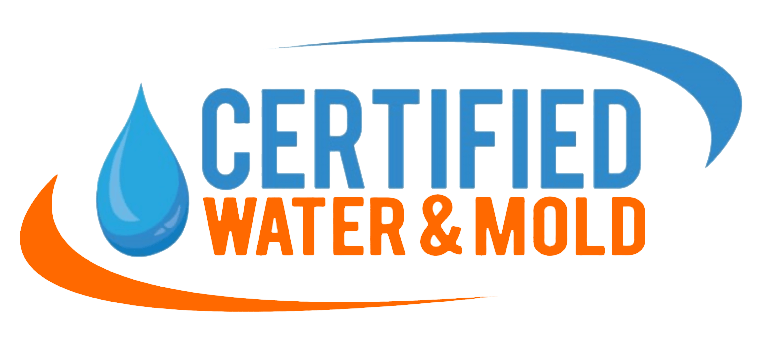
CONTACT US
- 2021 B East Spruce Circle Olathe, KS 66062.
- 816-835-4959
- mike@cwmrestoration.com
BUISNESS LISTINGS
Repairing Water-Damaged Walls: A Step-by-Step Guide
Water damage to walls can be a major inconvenience, but it’s important to take steps to repair the damage promptly. Left unchecked, minor damage can spread, leading to structural concerns and higher repair costs.
Here is a step-by-step guide on how to repair water-damaged walls:
1. Identify the source of the water damage. Once you’ve identified the source of the water damage, you can take steps to stop the flow of water and prevent further damage.
2. Dry the affected area thoroughly. This is essential to prevent mold growth. You can use fans, dehumidifiers, and other drying methods to remove moisture from the walls.
3. Remove any damaged drywall. If the drywall is soft, spongy, or moldy, it will need to be removed. Use a utility knife to cut away the damaged drywall.
4. Repair any structural damage. If the water damage has caused any structural damage to the walls, such as cracks or bowing, this will need to be repaired before the drywall can be replaced.
5. Install new drywall. Once the structural damage has been repaired, you can install new drywall. Be sure to use the correct type of drywall for the affected area.
6. Prime and paint the new drywall. Once the drywall has been installed, you will need to prime and paint it to match the rest of your walls.
If you are not comfortable repairing water-damaged walls yourself, you can hire a professional drywall contractor.
Tips for preventing water damage to walls.
• Inspect your plumbing regularly for leaks.
• Repair any roof damage promptly.
• Install gutters and downspouts to direct rainwater away from your foundation.
• Install a sump pump in your basement if you are in a flood-prone area.
• Be careful when using water outdoors, such as when watering your lawn or washing your car.
• Store water-sensitive items in a safe place, such as on high shelves or in cabinets.
Spotting the Signs of Water-Damaged Drywall

Learn how to distinguish between old and new water damage in Olathe and Overland Park. Water damage to drywall can be caused by a variety of factors, including leaks from pipes, roof damage, or flooding. If your walls are water-damaged, you may notice the following signs:
• Bubbling or swelling: The drywall may bubble or swell as water absorbs into the paper facing.
• Discoloration: The drywall may discolor, becoming yellow or brown.
• Mildew or mold growth: If the water damage is severe, mold or mildew may grow on the drywall.
• Musty odor: The drywall may develop a musty odor, which is a sign of mold growth.
• Soft or spongy drywall: The drywall may become soft or spongy to the touch.
• Peeling paint: The paint on the drywall may peel or bubble.
If you notice any of these signs, it is important to take action immediately to prevent further damage.
How to Repair Water-Damaged Walls
The severity of the water damage will determine the extent of the repairs needed. However, there are some general steps you can follow to repair water-damaged walls:
1. Dry the affected area thoroughly. This is essential to prevent mold growth. You can use fans, dehumidifiers, and other drying methods to remove moisture from the walls.
2. Remove any damaged drywall. If the drywall is soft, spongy, or moldy, it will need to be removed. Use a utility knife to cut away the damaged drywall.
3. Repair any structural damage. If the water damage has caused any structural damage to the walls, such as cracks or bowing, this will need to be repaired before the drywall can be replaced.
4. Install new drywall. Once the structural damage has been repaired, you can install new drywall. Be sure to use the correct type of drywall for the affected area.
5. Prime and paint the new drywall. Once the drywall has been installed, you will need to prime and paint it to match the rest of your walls.
If you are not comfortable repairing water-damaged walls yourself, you can hire a professional drywall contractor.
Tips for Preventing Water Damage to Walls
There are a number of things you can do to prevent water damage to your walls, including:
• Inspect your plumbing regularly for leaks.
• Repair any roof damage promptly.
• Install gutters and downspouts to direct rainwater away from your foundation.
• Install a sump pump in your basement if you are in a flood-prone area.
• Be careful when using water outdoors, such as when watering your lawn or washing your car.
• Store water-sensitive items in a safe place, such as on high shelves or in cabinets.
By following these tips, you can help to protect your walls from water damage.
There are a number of things you can do to prevent water damage to your walls, including:
• Inspect your plumbing regularly for leaks.
• Repair any roof damage promptly.
• Install gutters and downspouts to direct rainwater away from your foundation.
• Install a sump pump in your basement if you are in a flood-prone area.
• Be careful when using water outdoors, such as when watering your lawn or washing your car.
• Store water-sensitive items in a safe place, such as on high shelves or in cabinets.
By following these tips, you can help to protect your walls from water damage.
There are a number of things you can do to prevent water damage to your walls, including:
• Inspect your plumbing regularly for leaks.
• Repair any roof damage promptly.
• Install gutters and downspouts to direct rainwater away from your foundation.
• Install a sump pump in your basement if you are in a flood-prone area.
• Be careful when using water outdoors, such as when watering your lawn or washing your car.
• Store water-sensitive items in a safe place, such as on high shelves or in cabinets.
By following these tips, you can help to protect your walls from water damage.
There are a number of things you can do to prevent water damage to your walls, including:
• Inspect your plumbing regularly for leaks.
• Repair any roof damage promptly.
• Install gutters and downspouts to direct rainwater away from your foundation.
• Install a sump pump in your basement if you are in a flood-prone area.
• Be careful when using water outdoors, such as when watering your lawn or washing your car.
• Store water-sensitive items in a safe place, such as on high shelves or in cabinets.
By following these tips, you can help to protect your walls from water damage.
There are a number of things you can do to prevent water damage to your walls, including:
• Inspect your plumbing regularly for leaks.
• Repair any roof damage promptly.
• Install gutters and downspouts to direct rainwater away from your foundation.
• Install a sump pump in your basement if you are in a flood-prone area.
• Be careful when using water outdoors, such as when watering your lawn or washing your car.
• Store water-sensitive items in a safe place, such as on high shelves or in cabinets.
By following these tips, you can help to protect your walls from water damage.
There are a number of things you can do to prevent water damage to your walls, including:
• Inspect your plumbing regularly for leaks.
• Repair any roof damage promptly.
• Install gutters and downspouts to direct rainwater away from your foundation.
• Install a sump pump in your basement if you are in a flood-prone area.
• Be careful when using water outdoors, such as when watering your lawn or washing your car.
• Store water-sensitive items in a safe place, such as on high shelves or in cabinets.
By following these tips, you can help to protect your walls from water damage.
There are a number of things you can do to prevent water damage to your walls, including:
• Inspect your plumbing regularly for leaks.
• Repair any roof damage promptly.
• Install gutters and downspouts to direct rainwater away from your foundation.
• Install a sump pump in your basement if you are in a flood-prone area.
• Be careful when using water outdoors, such as when watering your lawn or washing your car.
• Store water-sensitive items in a safe place, such as on high shelves or in cabinets.
By following these tips, you can help to protect your walls from water damage.
There are a number of things you can do to prevent water damage to your walls, including:
• Inspect your plumbing regularly for leaks.
• Repair any roof damage promptly.
• Install gutters and downspouts to direct rainwater away from your foundation.
• Install a sump pump in your basement if you are in a flood-prone area.
• Be careful when using water outdoors, such as when watering your lawn or washing your car.
• Store water-sensitive items in a safe place, such as on high shelves or in cabinets.
By following these tips, you can help to protect your walls from water damage.







